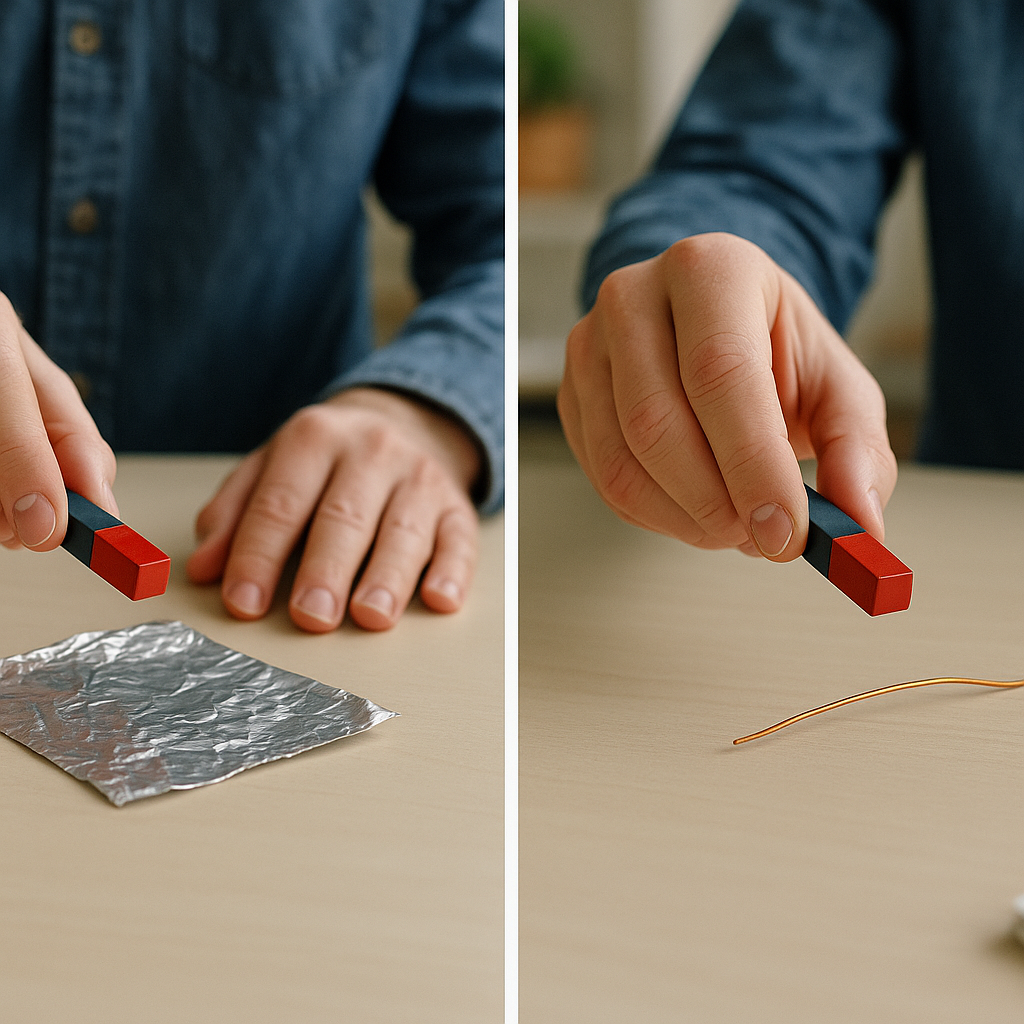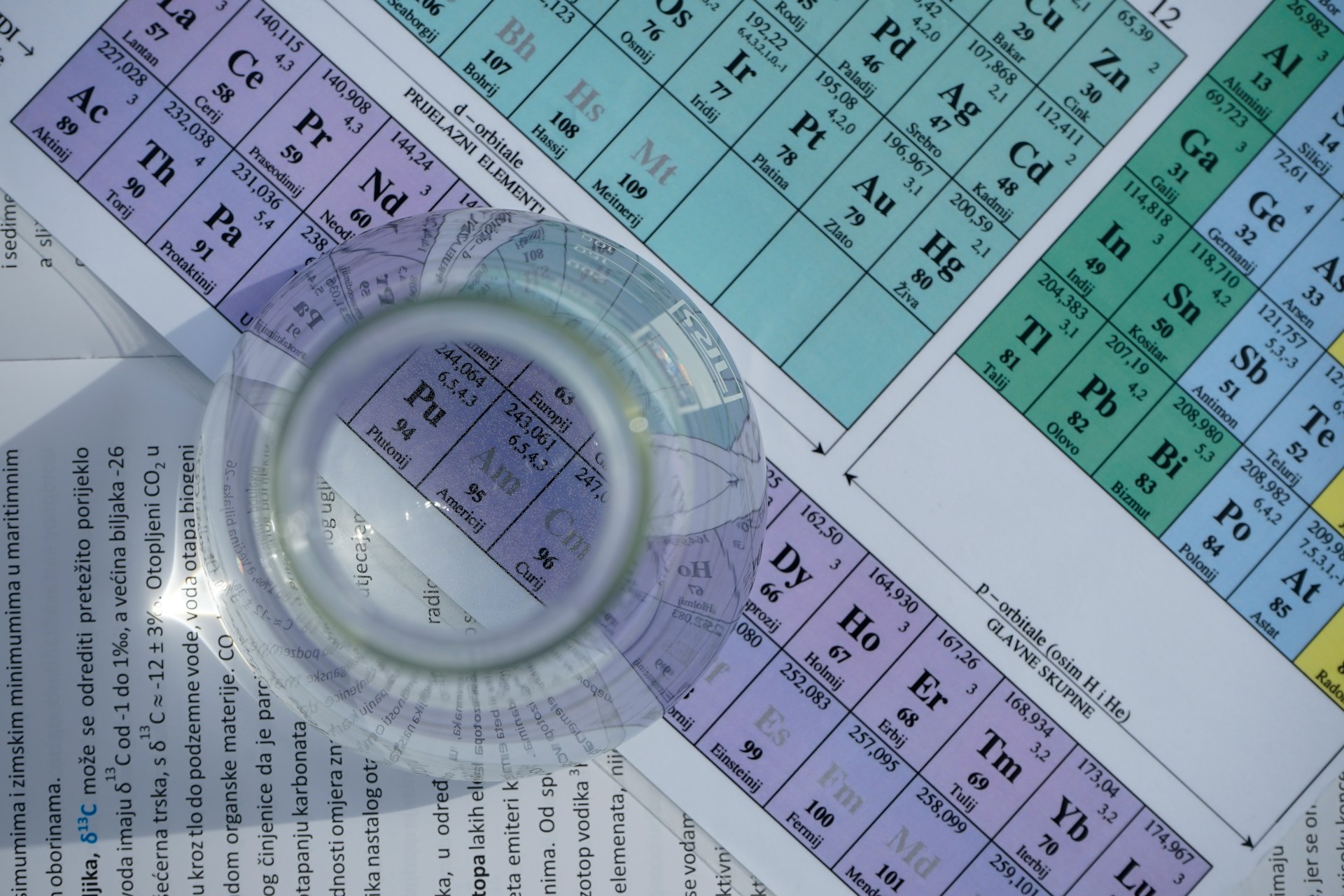5901 Botham Jean Blvd, Dallas, TX 75215
What Elements Are Magnetic? An Overview
June 4, 2025Have you ever placed a paperclip near a refrigerator door and felt that invisible pull? That force is magnetism at work. Magnets capture our curiosity, from childhood toys to the essential technologies that power our modern world.
Magnetism isn’t just about things being magnetic or non-magnetic. While most people know that iron sticks to magnets, the science behind this phenomenon is more complex.
The most commonly known magnetic elements are iron, nickel, and cobalt. These elements readily attract magnets and can become magnetized themselves. However, the world of magnetism extends far beyond these few elements.
What Are the Different Types of Magnetism?

Magnetism appears in several forms, each with unique properties and behaviors. The three main types are ferromagnetism, paramagnetism, and diamagnetism. These forms determine how materials interact with magnetic fields and which substances exhibit the magnetic properties we commonly associate with magnets.
Understanding these variations is not just academic—it has practical implications for recycling operations and electronics manufacturing. Let us explore each type in detail.
Ferromagnetism: The Strong Magnetic Force
Ferromagnetism represents the strongest and most familiar type of magnetism. Materials exhibiting ferromagnetism are strongly attracted to magnetic fields and can be permanently magnetized. This occurs because the magnetic moments of atoms align in the same direction, creating regions called magnetic domains.
What makes ferromagnetic materials special is their ability to maintain magnetization even after an external magnetic field is removed. This property makes them ideal for creating permanent magnets used in countless applications.
Common ferromagnetic materials include iron, nickel, and cobalt. These metals form the backbone of many recycling separation technologies, allowing for efficient sorting of ferromagnetic materials from other waste streams.
Paramagnetism: The Weak Attraction
Paramagnetic materials display a much weaker magnetic response than ferromagnetic ones. These materials are slightly attracted to magnetic fields but do not retain magnetization once the external field is removed. The attraction occurs because paramagnetic materials contain unpaired electrons that align with an applied magnetic field.
Unlike ferromagnetic materials, thermal motion easily disrupts this alignment. This explains why paramagnetic materials do not function as permanent magnets despite being attracted to magnetic fields.
Examples of paramagnetic materials include aluminum, platinum, and magnesium. Though their magnetic attraction is weak, paramagnetic properties can be leveraged in specialized recycling and waste sorting applications when stronger ferromagnetic separation is not suitable.
Diamagnetism: The Subtle Repulsion
Diamagnetism presents the opposite effect of the other types—diamagnetic materials are actually repelled by magnetic fields, though the effect is typically very weak. All materials exhibit some level of diamagnetism, but the effect is usually overshadowed in materials that also display paramagnetic or ferromagnetic properties.
This repulsion occurs because an external magnetic field alters the orbital motion of electrons, creating a small magnetic field in the opposite direction. Unlike ferromagnetism and paramagnetism, diamagnetism does not depend on unpaired electrons.
Examples of diamagnetic materials include copper, gold, and water. In advanced recycling systems, understanding diamagnetic properties can help develop more sophisticated separation techniques for non-ferrous materials.
Other Types of Magnetism
Beyond these main types, there are other forms of magnetism with specialized properties. Antiferromagnetism occurs when adjacent atoms have magnetic moments that point in opposite directions, canceling each other out. Ferrimagnetism involves opposing magnetic moments of unequal strength, resulting in a net magnetic moment.
These additional types are less commonly encountered but remain important in specialized scientific and industrial applications, including certain recycling technologies for complex materials.
| Type of Magnetism | Description | Examples |
|---|---|---|
| Ferromagnetism | Strongly attracted to magnetic fields and can be permanently magnetized. Maintains magnetization even after the external magnetic field is removed. | Iron, Nickel, Cobalt |
| Paramagnetism | Weakly attracted to magnetic fields. Does not retain magnetization once the external field is removed. | Aluminum, Platinum, Magnesium |
| Diamagnetism | Repelled by magnetic fields, but the effect is very weak. Does not depend on unpaired electrons. | Copper, Gold, Water |
| Antiferromagnetism | Adjacent atoms have magnetic moments that point in opposite directions, canceling each other out. | Not commonly specified |
| Ferrimagnetism | Opposing magnetic moments of unequal strength result in a net magnetic moment. | Magnetite |
Practical Implications for Material Identification
Understanding the different types of magnetism is essential for proper material identification in recycling processes. Ferromagnetic materials can be easily separated using standard magnetic separators. Paramagnetic materials require stronger magnetic fields to achieve separation. Diamagnetic materials typically need alternative sorting methods.
When designing recycling systems, engineers must consider these magnetic properties to create efficient sorting mechanisms. The most effective recycling operations employ multiple separation technologies based on these magnetic distinctions.
By accurately identifying the magnetic properties of materials, recycling facilities can significantly improve recovery rates and produce cleaner material streams for reprocessing, ultimately contributing to more sustainable resource management.
Which Elements Are Ferromagnetic?

Ferromagnetic elements are typically what people think of as ‘magnetic’. These materials can be strongly magnetized and retain their properties even after the external magnetic field is removed. Only a few elements in the periodic table exhibit ferromagnetism.
The three most common ferromagnetic elements are iron (Fe), nickel (Ni), and cobalt (Co). These elements form the foundation of most magnetic materials used in recycling and everyday applications.
Iron is the most recognized ferromagnetic element. With a Curie temperature of 770°C (1,043 K), it maintains its magnetic properties up to this point. Above this temperature, thermal energy disrupts its magnetic domains, causing it to lose its ferromagnetic properties and become paramagnetic.
Nickel is another significant ferromagnetic element, though less magnetic than iron. Its Curie temperature is lower at 354°C (627 K). Despite being less magnetic, nickel is valuable for its corrosion resistance.
Cobalt has the highest Curie temperature of the three at 1,121°C (1,394 K). This makes cobalt-based magnets particularly useful in high-temperature environments, where other materials would lose their properties.
Beyond these, several rare earth elements exhibit ferromagnetism under specific conditions:
- Gadolinium (Gd) – Ferromagnetic at room temperature with a Curie point of 20°C (293 K)
- Dysprosium (Dy) – Ferromagnetic only at very cold temperatures, below -168°C
- Erbium (Er) – Displays ferromagnetism at extremely cold temperatures, below -253°C
- Holmium (Ho) – Shows complex magnetic behavior depending on temperature
The atomic structure of these elements makes them ferromagnetic. They have unpaired electrons in their outer shells that create tiny magnetic fields. In ferromagnetic materials, these atomic magnetic moments align parallel within regions called magnetic domains.
When an external magnetic field is applied, these domains align with the field, creating a much stronger overall magnetic field. Even when the field is removed, ferromagnetic materials retain some alignment, allowing them to form permanent magnets.
This property is crucial in recycling operations, where magnetic separation techniques rely on the attraction between ferromagnetic materials and magnets to sort metal waste efficiently. The strong magnetic properties of iron, in particular, allow for effective separation of ferrous metals from mixed waste.
The ferromagnetic properties of these elements change with temperature. When heated above their Curie temperatures, all ferromagnetic elements lose their magnetic properties and become paramagnetic. This phenomenon is used in various industrial processes, including recycling operations where magnetic properties need to be temporarily altered.
Understanding which elements are ferromagnetic helps recycling facilities design more efficient sorting systems and better predict material behavior in the recycling stream.
What About Paramagnetic and Diamagnetic Elements?

Many elements exhibit weaker forms of magnetism that are important in everyday applications. These subtle magnetic behaviors might not be as dramatic as ferromagnetism, but they are crucial in various scientific and industrial processes.
Paramagnetic elements like aluminum and platinum have unpaired electrons, giving them a small positive magnetic susceptibility. This causes them to be weakly attracted to magnetic fields. When near a strong magnet, a paramagnetic material experiences a slight pull toward the field.
The magnetic behavior of paramagnetic materials depends on temperature. As temperature decreases, their magnetic response strengthens, following Curie’s Law. This temperature-dependent behavior makes paramagnetic materials valuable in applications needing precise control of magnetic properties.
Diamagnetic elements such as copper and gold exhibit the opposite behavior. These materials have all their electrons paired, creating a weak negative magnetic susceptibility. When exposed to an external magnetic field, diamagnetic materials generate their own internal magnetic field in the opposite direction, causing them to be slightly repelled.
Unlike paramagnetism, diamagnetic properties don’t depend on temperature and remain consistent regardless of how hot or cold the material becomes. This consistency makes diamagnetic materials reliable in applications requiring stable magnetic responses.
Practical Applications of Weak Magnetism
These subtle magnetic properties have remarkable real-world applications. MRI machines rely on both paramagnetic and diamagnetic interactions to create detailed images of soft tissues in the body. Paramagnetic contrast agents containing elements like gadolinium enhance the visibility of certain structures by changing how nearby water molecules respond to magnetic fields.
In laboratories, scientists use strong magnets to levitate diamagnetic materials. Water, organic tissue, and many plastics are all diamagnetic. Under extremely strong magnetic fields, the repulsive force becomes strong enough to counteract gravity, allowing objects to float in mid-air.
Modern induction cooktops work because of the magnetic properties of cookware. While ferromagnetic pots heat quickly, cookware containing paramagnetic aluminum conducts heat efficiently once warmed. Copper pans, despite being diamagnetic, are excellent heat conductors, which is why they are often used as a layer in premium cookware.
The electronics industry depends on the precise magnetic properties of various elements. Circuit boards often contain combinations of diamagnetic copper traces on paramagnetic substrates. The medical field uses paramagnetic oxygen sensors to monitor blood oxygen levels in patients.
Even living organisms utilize these magnetic properties. Some bacteria contain chains of paramagnetic particles that function as a biological compass, allowing them to navigate along the Earth’s magnetic field lines.
The study of paramagnetic and diamagnetic properties continues to lead to new technological advances. Researchers are developing magnetic refrigeration systems using paramagnetic materials that could one day replace conventional cooling technologies with more environmentally friendly alternatives.
Conclusion: The Spectrum of Magnetic Elements

Magnetic elements exhibit a wide range of behaviors, from strongly ferromagnetic materials like iron, nickel, and cobalt to the weakly repelled diamagnetic substances such as copper and water. This diversity in magnetic properties drives numerous technological applications. Understanding these varied responses has led to significant advances in data storage, electronics, medical imaging, and transportation systems.
As technology evolves, research into alternative magnetic materials beyond rare earth elements shows great promise for sustainable solutions. These developments suggest a future where magnetic innovations will continue to transform our daily lives. For comprehensive recycling solutions, including proper disposal of electronics with magnetic components, contact Okon Recycling at 214-717-4083.
